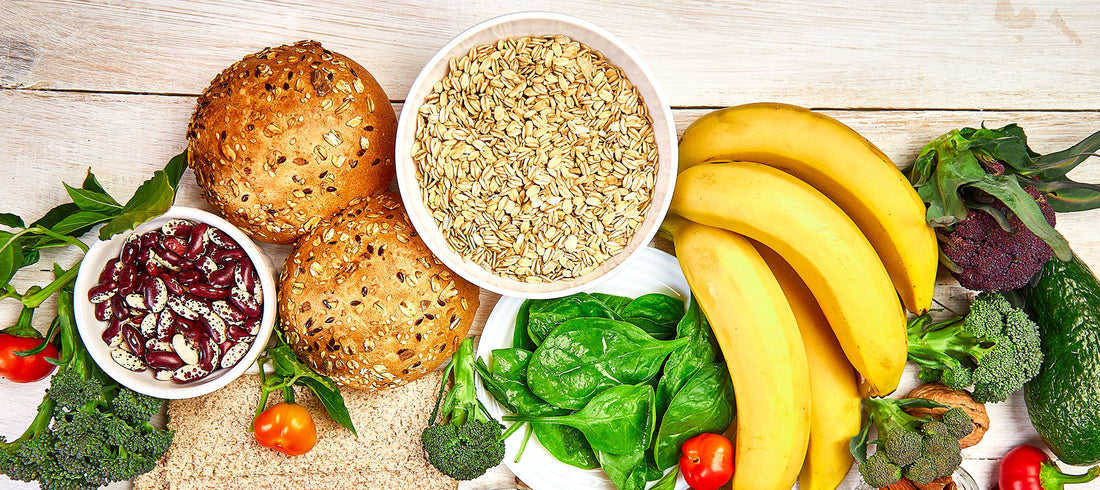Fiber is a type of carbohydrate that comes from certain plant-derived foods like beans, grains, fruit and vegetables that cannot be fully broken down and digested by the human body. While that sounds like a bad thing, it’s actually beneficial! Some of fiber’s benefits include helping reduce constipation, assisting with healthy weight management, lowering cholesterol and reducing inflammation. While the benefits of fiber are vast, most people don’t consume as much fiber as recommended on a daily basis.
The recommended fiber intake is 25-35g/daily, but most people in the United States only consume about 8-15g/daily. So, how can we add more fiber to our diet to reach the recommended daily intake?
While many different foods can provide fiber, some foods actually have higher fiber content and can more easily help you to consume adequate amounts of fiber every day. Some of these higher fiber foods include:
- Vegetables*
- Fruits*
- Beans & Lentils
- High-Fiber Breakfast Cereals
- Wheat bran
- Fiber Supplements, like those
- that contain psyllium
*In order to reap the full benefits of fiber, plant foods must be eaten in their whole form (most, including their skin). Fruit and vegetable juices do not contain the beneficial fiber found in their whole food form.
Here’s a chart that includes the fiber content of some fiber-rich foods:
|
2 Tbsp Flax Seeds
|
2.5 g
|
|
1 Oz Almonds
|
3.5 g
|
|
1 Oz Pumpkin Seeds
|
5.2 g
|
|
1/2 Cup Quinoa (cooked)
|
2.6 g
|
|
1/2 Cup Artichoke
|
7.2 g
|
|
1/2 Cup Lentils (cooked)
|
7.8 g
|
|
1/2 Cup Navy Beans (cooked)
|
9.3 g
|
|
1/2 Cup Raspberries
|
4 g
|
|
1 Cup Oatmeal (Cooked)
|
3.4 g
|
|
1 Small Apple (Including skin)
|
3.6 g
|
|
1 Medium Banana
|
3.1 g
|
|
1 Medium Avocado
|
13 g
|
|
1 Medium Pear (Including skin)
|
6 g
|
|
1 Medium Sweet Potato (Including skin)
|
3.6 g
|
As you can see, there are many foods that are rich in fiber that can easily be added into your diet. Here are some other tips on how to increase your daily fiber intake:
- Aim to consume 5-10 servings of fresh vegetables per day
- Incorporate fresh, whole fruits and vegetables into every meal or snack
- Choose whole grain rice, breads and pastas over products made with refined or white flour
- Swap juices for smoothies, using the same ingredients
- Add in a fiber supplement such as - Nature’s Fiber
As you add more fiber to your diet, you might notice some side effects like abdominal bloating or gas. You can minimize these side effects by starting with a small amount of fiber and slowly increasing, as your body tolerates it.
Some other practical tips on reducing negative side effects from increased fiber intake are:
- Fiber supplement dosing should be increased slowly to prevent gas and cramping
- Ensure adequate fluid per day (at least 64 ounces of water per day)
- And, always take fiber supplements with adequate fluids
Ultimately, as you increase your fiber intake, listen to your body and increase slowly as tolerated. There are some people like those with irritable bowel syndrome that cannot tolerate fiber supplements. If you are one of those people, consult a medical professional for additional guidance before adding in fiber supplements.
Taylor Morgan, PA-C, RDN, LD, IFNCP
Physician Assistant, Registered Dietitian Nutritionist

